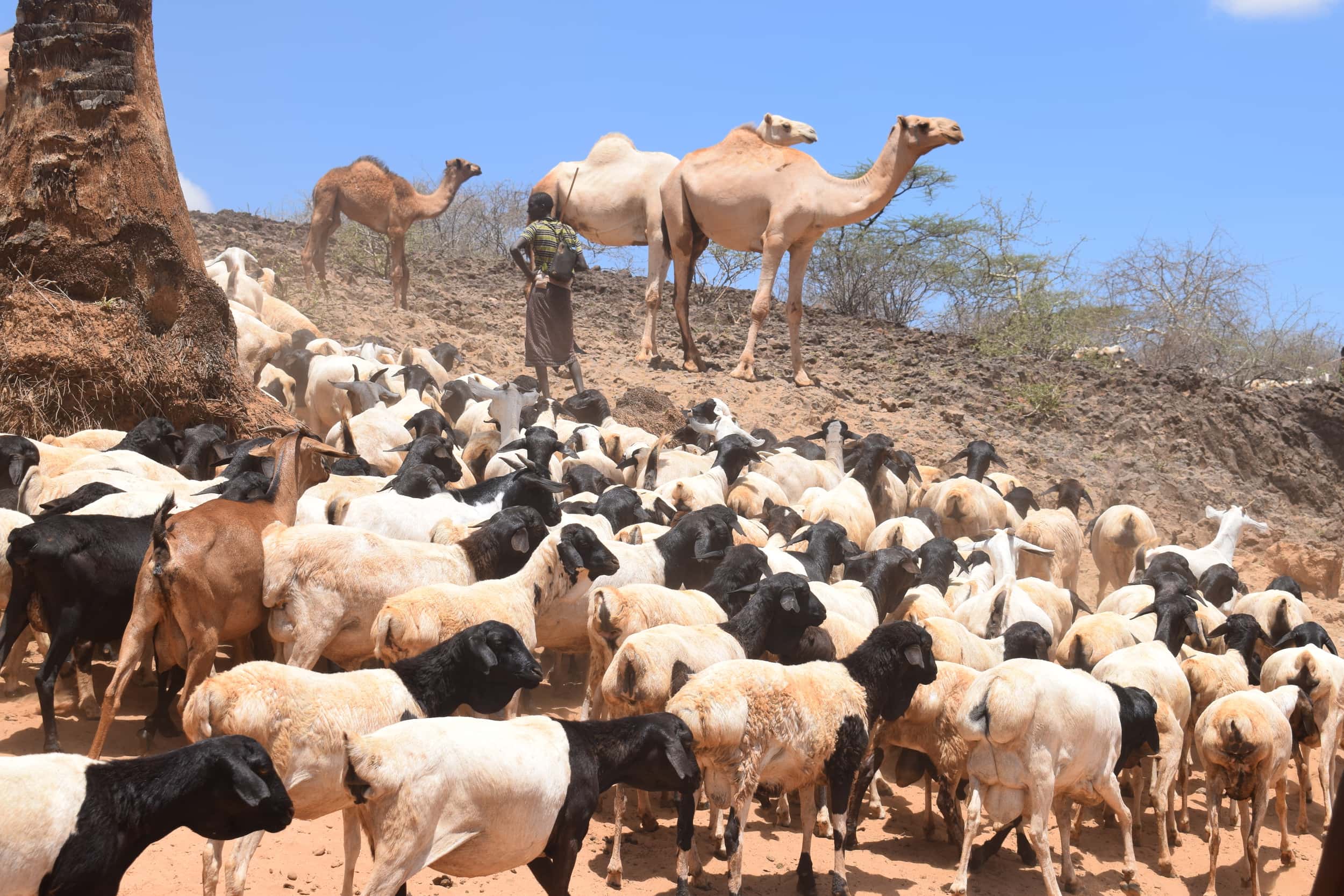Tracking the livestock sector for better climate change adaptation and mitigation in Kenya
- From
-
Published on
01.07.21
- Impact Area

Globally, countries are making pledges to reduce their greenhouse gas emissions as part of the Paris Agreement, and Kenya is among those that have submitted an updated Nationally Determined Contribution.
The country has set a target of reducing greenhouse gas emissions by 32% below a business-as-usual scenario by 2030 and has also committed to enhancing climate change adaptation.
Climate-smart agriculture is one such intervention, focusing on efficient livestock management systems to reach both adaptation and mitigation targets.
A recent online meeting discussed how the livestock sub-sector in Kenya can increase productivity and efficiency while enabling the country to meet its climate change targets.
Photo credit: A herder with his livestock in Isiolo County, Kenya. (ILRI/Dorine Odongo)
Related news
-

Mapping for Resilience: How Spatial Data is Transforming Karamoja Cluster
Ibukun Taiwo02.07.25-
Climate adaptation & mitigation
Pastoral communities in the Karamoja Cluster (a region spanning Kenya, Uganda, South Sudan, and Ethi…
Read more -
-

Building Resilience and Regeneration: The Central Highlands Ecoregion Foodscape (CHEF)
Sehlule Muzata02.07.25-
Climate adaptation & mitigation
At the CGIAR Sustainable Farming Program (SFP), we believe that collaboration is essential for trans…
Read more -
-

Planting with Precision: How Weather and Climate Information is Changing Bean Farming in Rwanda
The Alliance of Bioversity International and the International Center for Tropical Agriculture (CIAT)01.07.25-
Climate adaptation & mitigation
Imagine weather information as a GPS for farmers. Without it, the journey becomes uncertain, filled…
Read more -
